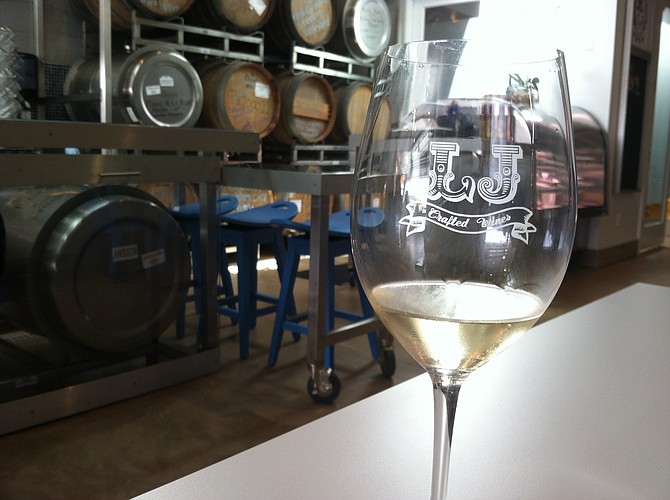 Facebook
Facebook
 X
X
 Instagram
Instagram
 TikTok
TikTok
 Youtube
Youtube

You can’t help but like the way the sun streams into a southwest exposure during the afternoon in Bird Rock. This time of year, it slides in obliquely, without the driving force of summer, but still carrying enough ochre warmth to shine up a $10 glass of LJ Crafted Wines’ Napa Valley vino joven. That is to say that she’s a young wine, harvested just last year, yet to bear the isolation of bottling.

It wasn’t so long ago that similar quantities of sunlight fell on some grapes up north, where it found itself captured, stored for the time being until some of it could be reclaimed by yeasts as the little fungi munched the grapes’ various sugars. But the yeasts only borrowed the energy, leaving behind alcohol (plenty energetic itself) and the volatile organic compounds that give LJCW’s’ Albariño a distinctive whiff of white peach (the tasting notes say “nectarine,” but I beg to differ), and a less assertive splash of that same fruit juice on the palate.
Of course, LJCW has other wines, a complete sampling of which is available for just $10. When all is said and done, it probably amounts to a glass-and-a-half of wine collectively poured.
Physics tells us that it takes a ray of sunshine only eight minutes to cross the gap dividing Earth from the nearest star. By comparison, the time that same energy spends trapped inside a bottle of wine, stored there until its eventual release as human effort, is an eternity. Think of that as the afternoon sunlight slips through the window and the whole of the cosmos ever-so-briefly reflects in the cool glide of young, white wine.


You can’t help but like the way the sun streams into a southwest exposure during the afternoon in Bird Rock. This time of year, it slides in obliquely, without the driving force of summer, but still carrying enough ochre warmth to shine up a $10 glass of LJ Crafted Wines’ Napa Valley vino joven. That is to say that she’s a young wine, harvested just last year, yet to bear the isolation of bottling.

It wasn’t so long ago that similar quantities of sunlight fell on some grapes up north, where it found itself captured, stored for the time being until some of it could be reclaimed by yeasts as the little fungi munched the grapes’ various sugars. But the yeasts only borrowed the energy, leaving behind alcohol (plenty energetic itself) and the volatile organic compounds that give LJCW’s’ Albariño a distinctive whiff of white peach (the tasting notes say “nectarine,” but I beg to differ), and a less assertive splash of that same fruit juice on the palate.
Of course, LJCW has other wines, a complete sampling of which is available for just $10. When all is said and done, it probably amounts to a glass-and-a-half of wine collectively poured.
Physics tells us that it takes a ray of sunshine only eight minutes to cross the gap dividing Earth from the nearest star. By comparison, the time that same energy spends trapped inside a bottle of wine, stored there until its eventual release as human effort, is an eternity. Think of that as the afternoon sunlight slips through the window and the whole of the cosmos ever-so-briefly reflects in the cool glide of young, white wine.
Comments